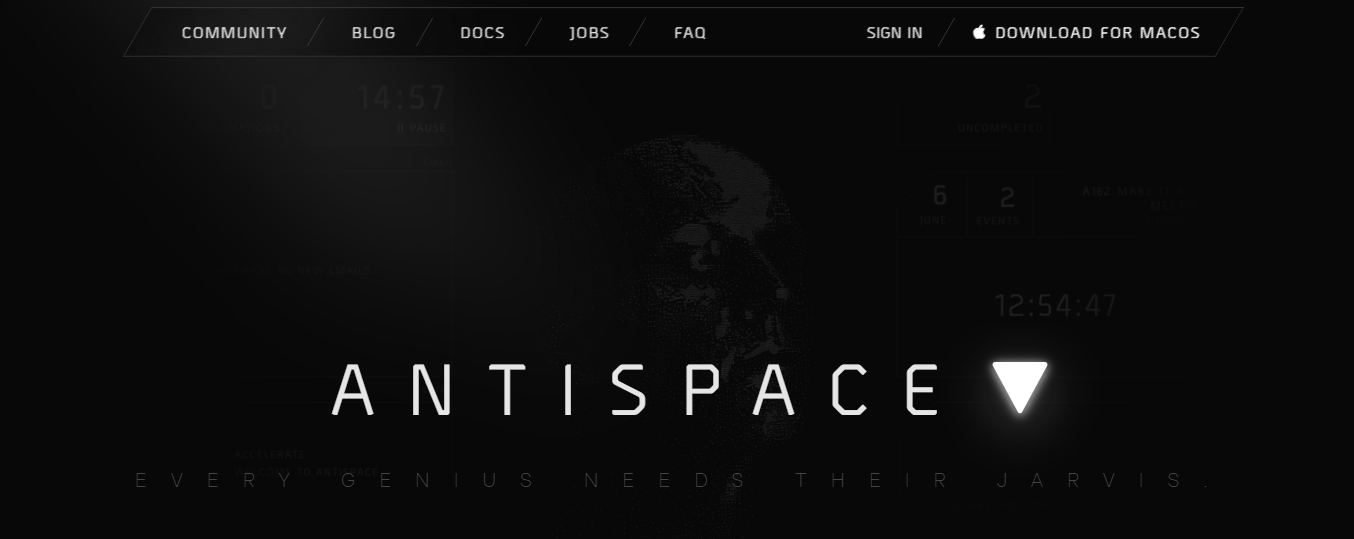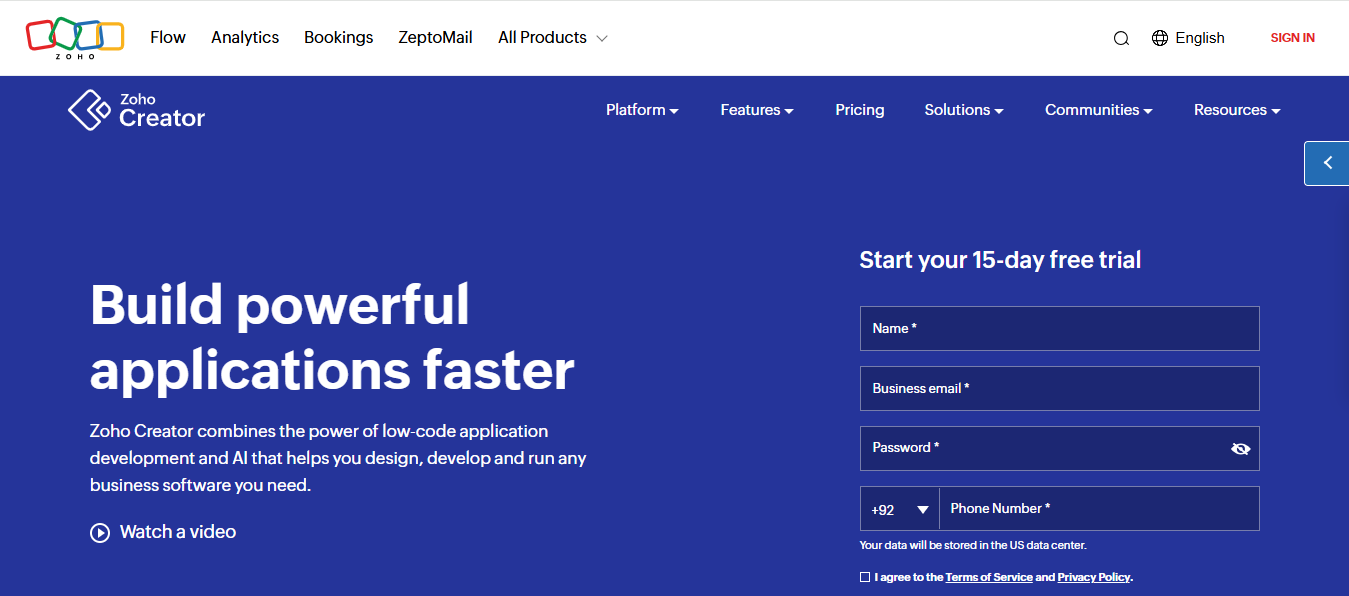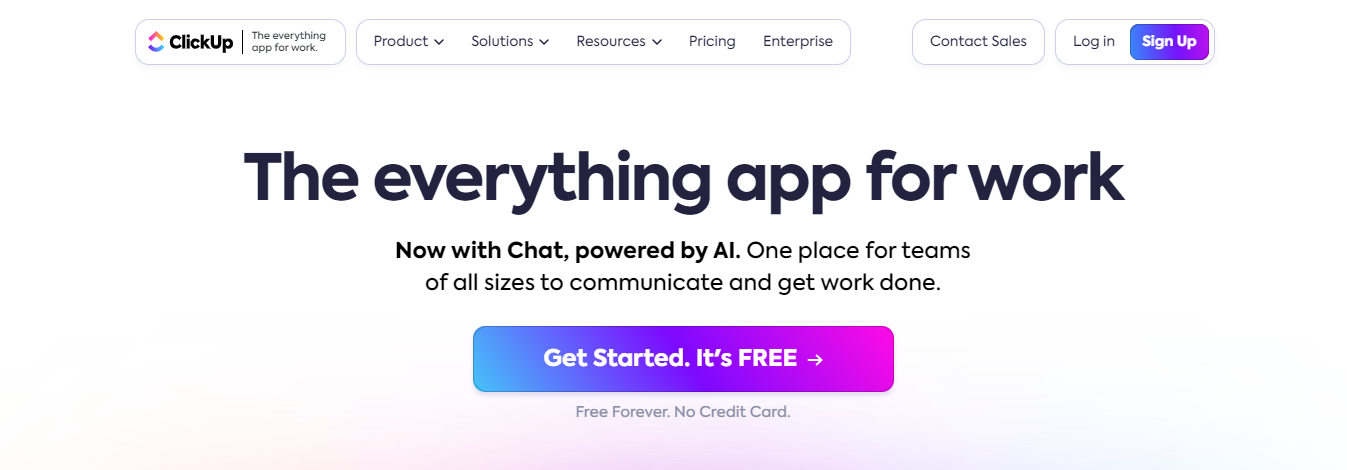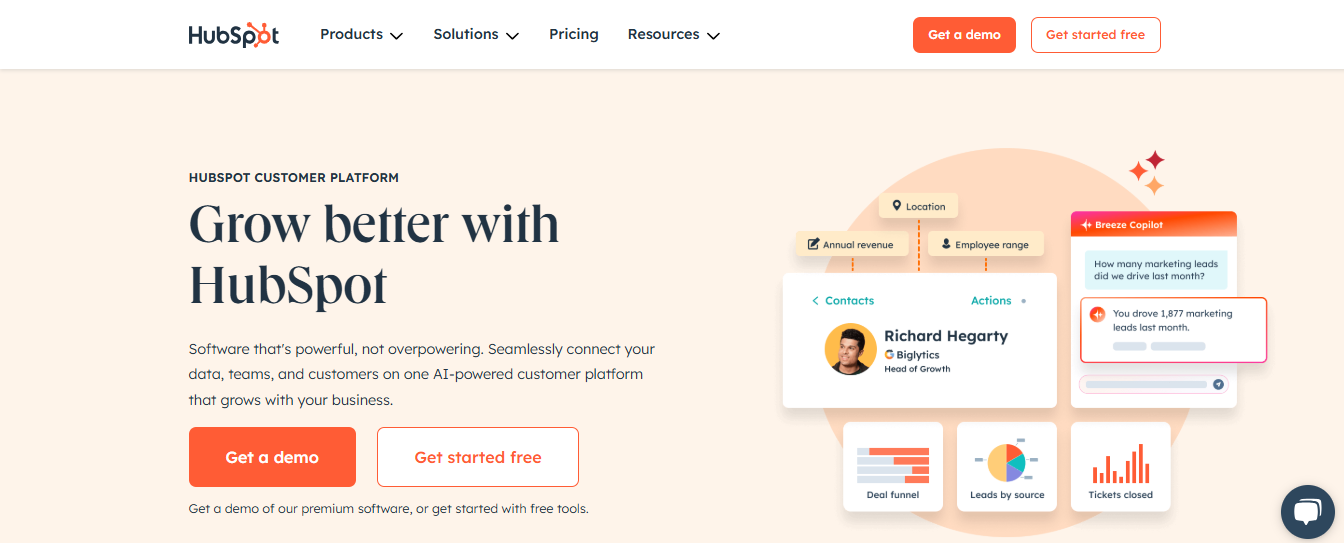Operational inefficiencies can cause severe headaches for business leaders. Errors, delays, and miscommunication can derail productivity and lead to missed deadlines, wasted resources, and unhappy customers. Improving the productivity workflow in operations management helps businesses tackle these issues systematically, improving day-to-day processes and boosting organizational performance. This article explores methods to improve productivity in operations management to help you identify strategies that can bolster your operational processes today.
Antispace offers a unique solution to help achieve your goals. Our AI-based productivity operating system can help simplify learning about methods to improve productivity in operations management by providing actionable insights based on your existing workflows.
Why Productivity Matters in Operations Management

Productivity matters because it helps businesses make more money. Productivity doesn’t just mean doing things faster. It’s about doing the right things most effectively. When a company uses its resources efficiently, it reduces waste, lowers operational costs, and increases output.
Research from Harvard Business Review shows that highly productive businesses can enjoy 30–50% higher profits than their less efficient peers. That's a massive edge in today’s competitive environment.
Maximizes Resource Value
When productivity increases, the value of resources improves, too. Resources, labor, capital, and materials are finite and often expensive. Operations management seeks to ensure these inputs are used wisely.
High productivity means fewer resources are needed to produce the same results, frees up capital for growth initiatives, innovation, or customer experience improvements.
Enhances Customer Satisfaction
When operations are productive, customers win. High productivity typically leads to shorter lead times, more consistent quality, and faster delivery, all of which boost customer trust and loyalty.
When customers get what they want, when they want it, satisfaction grows. And satisfied customers are not just more likely to return; they’re more likely to recommend your business to others.
Builds a Positive Work Culture
Efficient, well-managed workflows help employees stay focused and reduce the stress of chaotic or unclear processes. That leads to better morale and stronger employee retention. When people feel their work matters and contributes to a bigger goal, they’re more engaged, And more productive in return.
Fuels Innovation and Continuous Improvement
A productive environment doesn’t just maintain, it evolves. When operational systems run efficiently, businesses gain the breathing room to explore new ideas, test improvements, and iterate. Employees are more likely to suggest enhancements when they see how well the system works and where it can grow.
Leverages Technology for Smarter Decisions
Modern operations management relies on real-time data, automation, and digital tools to fine-tune every performance aspect. This digital edge allows companies to pinpoint inefficiencies, accurately forecast demand, and adapt quickly to market changes, all while increasing overall productivity.
Related Reading
- What Is Productivity Software?
- Pyramid of Productivity
- Small Business Intelligence
- Using AI to Enhance Business Operations
- AI Workflows
11 Methods to Improve Productivity in Operations Management

1. Implement Lean Management Principles
Lean management minimizes waste while maximizing value. This methodology improves productivity by streamlining processes, reducing unnecessary steps, and emphasizing continuous improvement. Companies that successfully integrate lean principles often report a 15-25% increase in productivity.
When organizations focus on eliminating waste, they can allocate more resources toward value-added activities. Lean management also encourages respect and teamwork, empowering employees at all levels to find inefficiencies and propose solutions. This enhances engagement and fosters a sense of ownership among staff.
2. Use Technology to Automate
Using automation, such as robotics or artificial intelligence (AI), significantly boosts productivity. According to Deloitte, 74% of executives recently stated that implementing automation meant improved operational efficiency. Automation handles repetitive tasks so human employees can focus on strategic initiatives and complex problem-solving.
This means better accuracy and faster output, minimizing errors that derail productivity. It also means better job satisfaction as employees feel less bogged down in menial tasks and are more capable of efficient time management.
Smarter Automation, Smarter Decisions
As businesses adopt more sophisticated automation solutions, they also gain the ability to analyze vast amounts of data in real-time, which means more informed decision-making. This leads to better operational efficiency, market anticipation, and adaptability so the organization stays competitive.
3. Offer Continuous Training and Development
Employee skills and knowledge impact productivity in profound ways. Continuous training and development initiatives ensure employees have the latest skills and best practices to enhance their work.
One study found that organizations that invest in training see productivity increase by up to 20% in the first year of implementation. Developing a continuous learning culture improves efficiency and boosts employee morale, as workers feel valued and supported in their growth.
Training Boosts Retention and Cuts Costs
Companies prioritizing training often experience lower turnover rates, as employees are likelier to stay with an organization that invests in their professional development.
This retention saves costs associated with hiring and onboarding new staff and preserves institutional knowledge, which is invaluable for maintaining operational continuity and enhancing overall productivity.
4. Improve Communication
Better communication between employees and managers improves productivity, satisfaction, and morale. One study found that improved communication increased employee engagement by 47%.
Clear communication is key to productivity, whether your organization is remote, in-office, or hybrid. By being open and transparent, organizations increase employee awareness and alignment with company goals. Streamlining communication and reducing miscommunication means less time wasted for everyone.
Empower Teams Through Continuous Feedback
Continuous feedback is another way to improve communication for team members at all levels. Organizations empower employees to improve operations and productivity for themselves and their teams by providing regular, consistent ways to ask questions or provide suggestions.
5. Leverage Collaboration Tools
Better collaboration leads to better productivity. Teams that work together efficiently accomplish more and build trust and empathy so they can work more creatively together. Organizations must improve collaboration to remove silos and increase productivity.
Boost Productivity with Cloud Collaboration Tools
In today’s workplace, most teams need access to their work from several places, including remote work environments or different devices. Cloud-based collaboration technology gives everyone real-time access to documents, projects, calendars and tools to work more effectively together, reducing confusion and wasted time.
Project management is one place where organizations are often held back. Updated technology and project management tools streamline the process and improve productivity. Many provide automated tools to update team members on progress or project status so employees can focus more on work that matters.
6. Use Real-Time Data and Analytics
Having up-to-the-minute data helps operations managers make quick, informed decisions. Instead of waiting for end-of-month reports, dashboards and BI tools can provide real-time insights into production rates, supply chain delays, employee performance, and more. This visibility allows businesses to address issues before they escalate.
Benefit: Spotting a machine slowdown early can prevent a complete line shutdown, saving hours of lost production.
7. Set Clear Goals and Performance Metrics
You can’t improve what you don’t measure. Setting specific, measurable goals (like reducing production time by 10% or improving order accuracy to 98%) gives your team a clear target. Performance metrics, tracked through scorecards or KPIs, help you monitor progress and make necessary adjustments.
Pro tip: Align individual and team goals with broader organizational objectives for better alignment and motivation.
8. Invest in the Right Technology
Technology should support your workflow, not complicate it. The right tools can automate tasks, enhance collaboration, and provide better oversight. Whether it’s ERP systems for resource planning, CRM tools for customer management, or analytics platforms for forecasting, make sure they fit your operational needs and scale with your growth.
Key consideration: Choose tech that integrates easily with your current systems to avoid costly and time-consuming overhauls.
9. Optimize Resource Management
Productivity depends on how well you use your resources, people, equipment, and materials. Tools like Gantt charts or capacity planning software help managers allocate resources where needed most. Regular audits can reveal inefficiencies like:
- Idle machinery
- Overworked staff
- Underutilized inventory
Result: Better scheduling leads to smoother workflows and less waste, ultimately improving output.
10. Implement Continuous Improvement Programs
Methods like Kaizen, Six Sigma, or PDCA (Plan-Do-Check-Act) create a culture where employees are encouraged to identify problems and suggest improvements. This bottom-up approach fosters engagement and ensures operations are constantly evolving to be better, faster, and more cost-effective.
Example: A warehouse worker may suggest a new way to organize inventory that reduces retrieval time by 30%, a small change with a significant impact.
11. Improve Workplace Environment
Employee satisfaction directly affects productivity. Employees are more likely to stay engaged and perform better when they are comfortable, supported, and valued. This can involve improving workspace layout, offering flexible schedules, recognizing achievements, or even reducing unnecessary stress through better organization.
Insight: A clean, well-lit, and ergonomically designed workspace improves focus and reduces injury or fatigue.
Effortless Productivity with Antispace
Antispace transforms your daily workflow with an AI-powered, gamified productivity operating system. Our platform seamlessly integrates with your essential tools, Email, Calendar, and Notes, while our AI assistant handles everything from email management to task organization.
We've built intelligence into every aspect of your workflow:
- Smart email responses
- Automated calendar management
- Enhanced note-taking
- Streamlined task coordination
Your AI Executive Assistant for Effortless Productivity
Antispace is your virtual executive assistant. It reduces context switching and automates routine tasks, letting you focus on what matters while our AI handles the rest. Whether you're brainstorming ideas, managing communications, or coordinating projects, Antispace turns productivity from a chore into an engaging experience.
Get started for free with one click today.
Related Reading
- Factors of Productivity
- Productivity Software Examples
- Microsoft Productivity Tools
- Improve Focus and Productivity
- Productivity Tools for VAs
- Best Free AI Tools
- Best AI Tools for Math Teachers
3 Common Barriers and How to Overcome Them

1. The People Factor: Resistance to Change
One of the biggest roadblocks in any productivity initiative is resistance to change. Change can be unsettling, especially for teams comfortable with the current way, whether it’s new processes, new technologies, or a shift in day-to-day responsibilities.
How to Overcome It
Communicate early and often. Be transparent about why changes happen and how they benefit individuals and the organization. Involve employees in the process. When teams feel they’re part of the decision-making, they’re more likely to support new initiatives.
Provide training and support. Gradually help people learn new tools or adapt to new processes to set them up for success.
2. The Management Factor: Lack of Stakeholder Buy-In
If leadership or key stakeholders aren’t entirely on board, productivity initiatives may not get the resources, support, or attention they need to succeed. Without executive alignment, even the best-laid plans can fall flat.
How to Overcome It
Align improvements with strategic goals. Show how productivity enhancements drive business performance and help achieve broader company objectives. Build a case with data.
Use metrics to illustrate potential ROI and efficiency gains. Numbers speak louder than ideas alone. Create early wins. Start with minor, visible improvements to prove the concept and build momentum for broader change.
3. The Tech Factor: Data Integration Challenges
Operations teams often work with fragmented data across different systems, supply chain, customer service, finance, and HR. When that data isn’t connected, it’s hard to get a clear, accurate picture of what’s happening, which makes decision-making slower and less effective.
How to Overcome It
Invest in integration tools or middleware. Modern BI and ERP platforms offer connectors that unify data sources into a single view.
Start with phased integration. Focus first on high-impact data sets and expand integration efforts over time. Create a data governance strategy. Ensure data is clean, accurate, and updated regularly so decisions are based on reliable information.
Bringing It All Together: Phased Implementation & Feedback Loops
The key to overcoming these barriers is not trying to do everything simultaneously. A phased rollout, whether for new systems, workflows, or policies, allows teams to adjust, identify friction points, and gather feedback before scaling. Establishing continuous feedback loops is equally important.
Regular check-ins, performance metrics, and open input channels help keep productivity improvements aligned with real-world conditions. This adaptive approach ensures that operations management becomes more productive, resilient, and responsive.
9 Best Tools to Improve Productivity in Operations Management
1. Antispace: Your AI Productivity Operating System

Antispace transforms your daily workflow with an AI-powered, gamified productivity operating system. Our platform seamlessly integrates with your essential tools, Email, Calendar, and Notes, while our AI assistant handles everything from email management to task organization.
We've built intelligence into every aspect of your workflow:
- Smart email responses
- Automated calendar management
- Enhanced note-taking
- Streamlined task coordination
Your AI Executive Assistant for Effortless Productivity
Antispace is your virtual executive assistant. It reduces context switching and automates routine tasks, letting you focus on what matters while our AI handles the rest. Whether you're brainstorming ideas, managing communications, or coordinating projects, Antispace turns productivity from a chore into an engaging experience.
Get started for free with one click today.
2. Zoho Creator: Your Low-Code Business Process Management Tool

Zoho Creator is a low-code business process management tool that helps businesses create and manage processes. It offers data collection, analysis, and collaboration tools, making it suitable for agencies and companies of all sizes.
The platform’s low-code suite allows users to build customized database apps using business rules. You can also use it to schedule tasks, create tables, import files, and refresh or import .csv, .xls, and .bd files online in minutes.
Features of Zoho Creator:
- Reports scheduler
- Admin panel to withdraw or give permissions
- Pre-built application templates
- Encrypted and secure documents sharing
- Group chat to share files and edit together
- Business process automation
- Built-in barcode, maps, and camera
3. Trello: Your Visual Task Management Tool

Trello is another operations management tool that helps you stay organized and operationally efficient with inboxes, boards, and project planners. It allows you to quickly turn chats from your project management software into tasks, letting you keep all your discussions and to-dos in one place.
Trello also allows you to customize your workflows with integrations and easily duplicate your to-dos across multiple locations. For instance, you can turn your emails into tasks when you forward them to the Trello inbox, and Atlassian Intelligence (AI) will transform them into to-dos.
Features of Trello:
- Connects with relevant project apps
- Automate tasks and workflows with
- Butler Capture important info from chats and messages
- Sync calendar and allocate focused time slots
- View tasks across multiple boards
- Pre-built templates for easy setups
4. ClickUp: Your All-in-One Project Management Tool

ClickUp is an all-in-one project management software that aids team communication to boost productivity. It has features like Gantt charts, AI-writer, video conferencing, ClickUp Brain, and Kanban boards to automate workflows and manage tasks.
This allows teams to automate repetitive workflows, use collaboration features like real-time commenting or @mentions to share files, or even track teams to know how much time they spend on each project.
Features of ClickUp:
- AI writer for task descriptions
- Boards to visualize tasks and projects
- Simple interface for new users
- Customizable boards and cards
- Supports third-party integrations with apps and services
- Consistent updates on ongoing tasks
- Lets you integrate over 1,000 apps and services, just like SweetProcess
5. Next Matter: Your Workflow Automation Platform

Next Matter is a workflow automation platform for enterprise-grade finance, healthcare, and e-commerce service teams. It enables organizations to automate and streamline their workflows, ensuring 100% service reliability.
Aside from the enterprise-grade security and compliance Next Matter provides to ensure your business doesn’t have issues with regulatory bodies, it comes with a range of features like customizable apps and workflow automation and integrates with various systems. It allows teams to share ideas, scale operations, and enhance customer experience.
Features of Next Matter:
- No-code form builder
- Enterprise-grade security and compliance
- Integrates with 1,000s of apps and APIs
- Dashboard for operations tracking
- White-label workspaces, portals, and domains
- Compliance tasks automation
6. Jolt: Your Task Management Solution for the Food Service Industry

Jolt is an operations management platform designed to help food service and retail businesses streamline their operations, maintain compliance, and improve employee performance. The platform offers digital tools, temperature sensors, checklists, task scheduling, and labeling. These tools help businesses ensure that staff adhere to food safety compliance, meet health standards to reduce risk, and focus on delivering excellent customer experiences.
Features of Jolt:
- Staff clock-in and shift-length monitoring
- Digital checklist for teams
- Communication tools for teams
- Drag-and-drop task scheduling
- Knowledge base for staff training
- Remote temperature monitoring sensors
7. Fibery: Your All-in-One Work Platform

Fibery is a work platform built to substitute operational tools and connect teams easily. It comes with various features, including:
- Databases
- Customizable workspaces
- Fields
- Views
- Permissions
It also offers automation features and integrations with other services and software. It is more suitable for digital agencies, software development, or startups as it enables teams to manage their projects simultaneously on a central dashboard.
Features of Fibery:
- Manage projects from one central dashboard
- Easily collaborate with teammates
- Connects to other tools and services
- Pre-built templates for easy personalization
- Save time and manual effort with no-code automation rules
- Create and edit docs from your dashboard
- Assign and track tasks across teams
8. HubSpot CRM: Your Customer Relationship Management Tool

HubSpot is a digital system that provides businesses with different tools to manage their marketing, customer service, and sales efforts in one unit. It’s designed to help companies to scale by giving a bird's-eye view of their customers’ behavior to deliver personalized experiences. It also has several hubs that help to simplify specific areas of its operations, such as:
- Marketing
- Automation
- Customer service
- Content creation
Its AI-powered tools automate routine tasks, provide insights into customer behavior, and make data-driven decisions. Plus, it’s built to scale and be flexible, making it suitable for both small and large enterprises.
Features of HubSpot CRM:
- AI-powered tools to simplify manual, repetitive tasks and write or gain insights from customers
- Omni-channel customer support
- Managed sales pipelines and closed sales
- Data sync and automation
- Sales and marketing ROI reports and analytics
- Automates billings, invoices, and subscriptions
- Integrates with popular tools like:
- Gmail
- Shopify
- Slack
9. Zapier: Your Task Automation Tool

Zapier is a user-friendly operations system that syncs various web apps and services to create automations commonly called “Zaps,” which can automate data entry, customer support, or even sales and email marketing.
By streamlining repetitive tasks and workflows, Zapier helps users reduce workload and operational errors so they can focus on essential things that drive business growth. Zapier integrates with over 7,000 apps and services, including popular tools like Slack, Salesforce, and Google Sheets, to speed up productivity.
Features of Zapier:
- Automates operations with over 7,000 app integrations
- Use Zaps to set automation triggers and actions
- Chat feature for team communication
- Solid security to protect company data
- Web and mobile versions for easy access
- Zap workflow templates to save time
- Single sign-on (SSO) to manage user access
Related Reading
- AI Tools for Finance
- AI Tools for Small Business
- AI Tools for Business Analyst
- Team Productivity Apps
- Small Business Productivity Tools
- Enterprise Productivity Solutions
- Personal Productivity Tool
Let Our AI-based Productivity Operating System Handle Your Boring Work
Antispace transforms your daily workflow with an AI-powered, gamified productivity operating system. Our platform seamlessly integrates with your essential tools, Email, Calendar, and Notes, while our AI assistant handles everything from email management to task organization.
We've built intelligence into every aspect of your workflow:
- Smart email responses
- Automated calendar management
- Enhanced note-taking
- Streamlined task coordination
Your AI Executive Assistant for Effortless Productivity
Antispace is your virtual executive assistant. It reduces context switching and automates routine tasks, letting you focus on what matters while our AI handles the rest. Whether you're brainstorming ideas, managing communications, or coordinating projects, Antispace turns productivity from a chore into an engaging experience.
Get started for free with one click today.